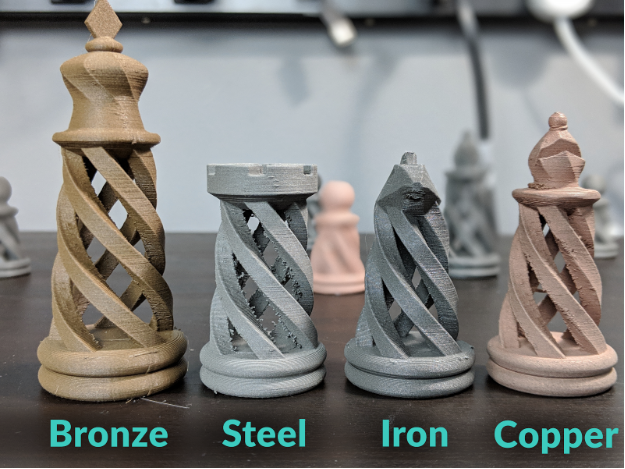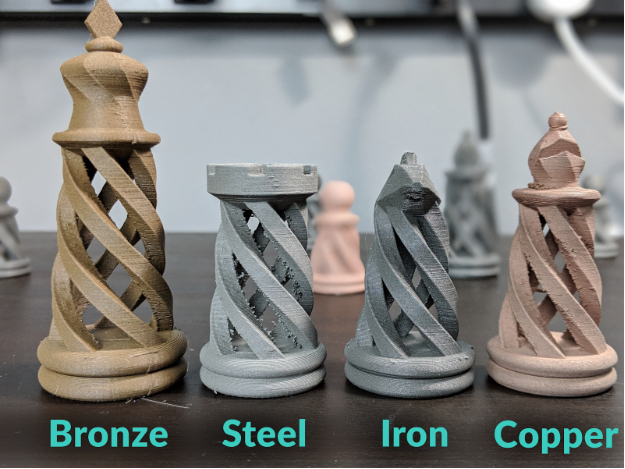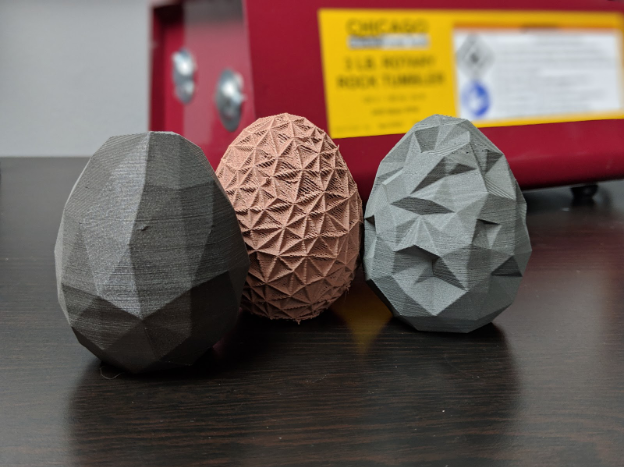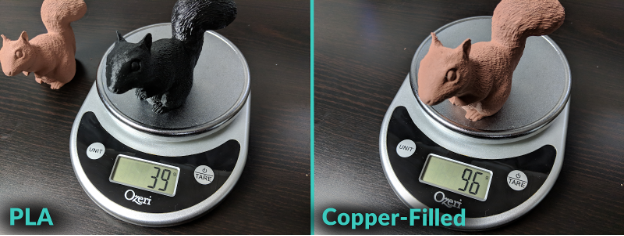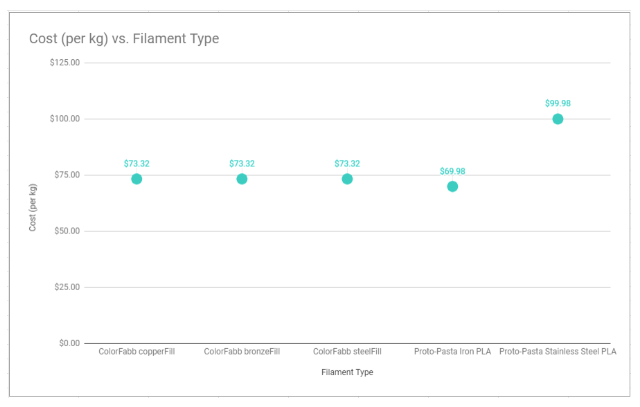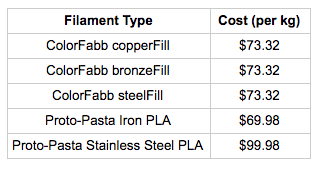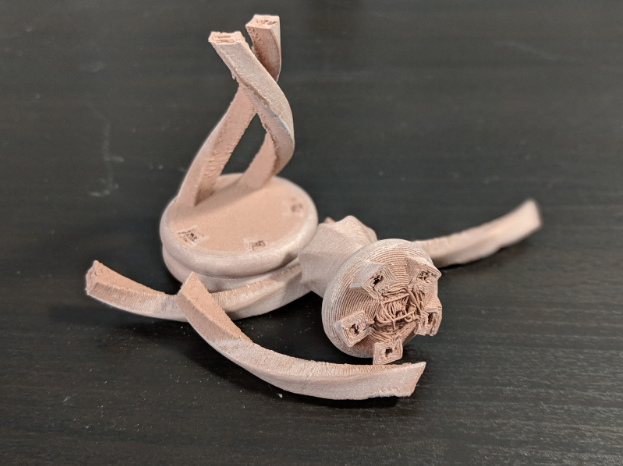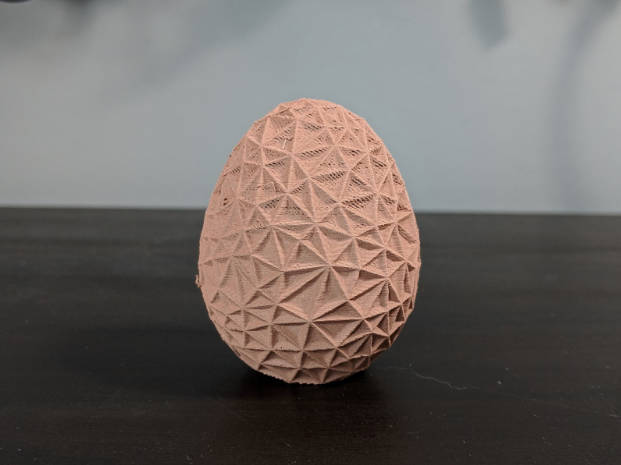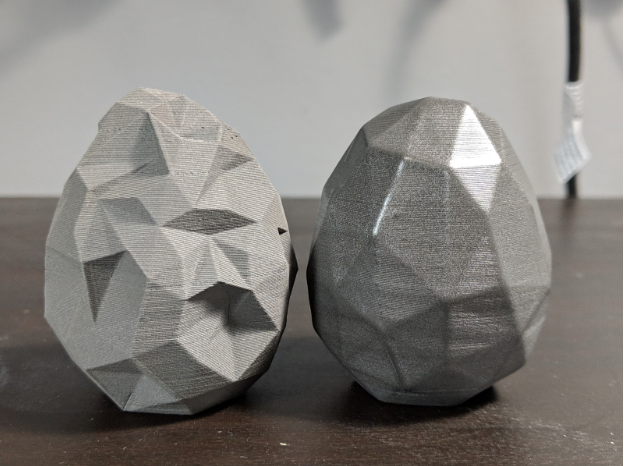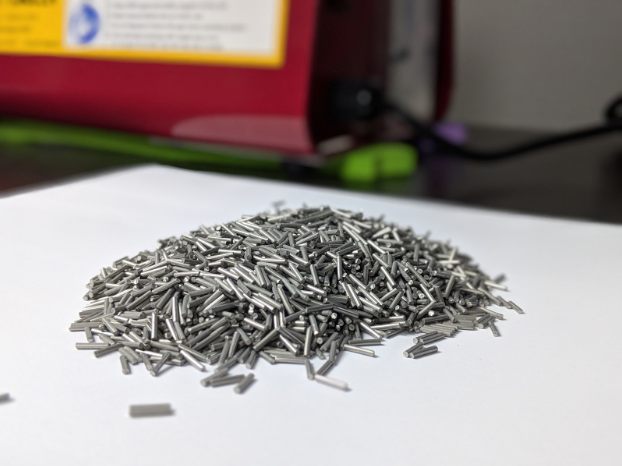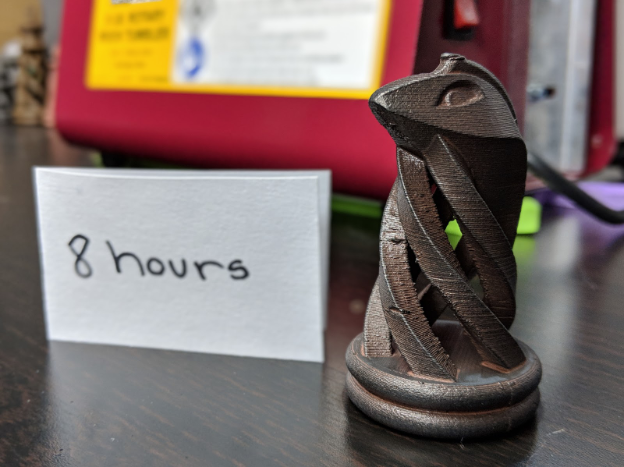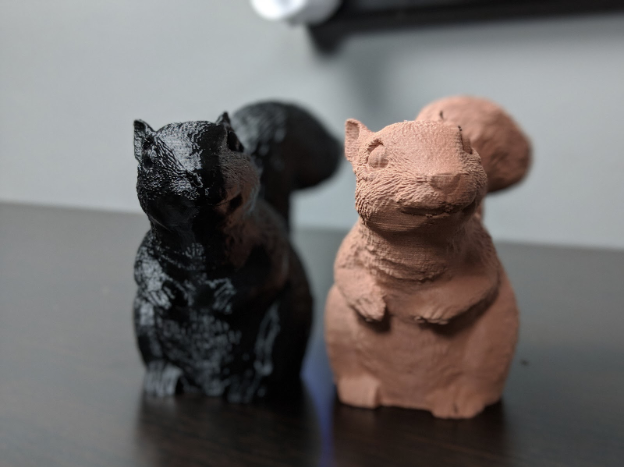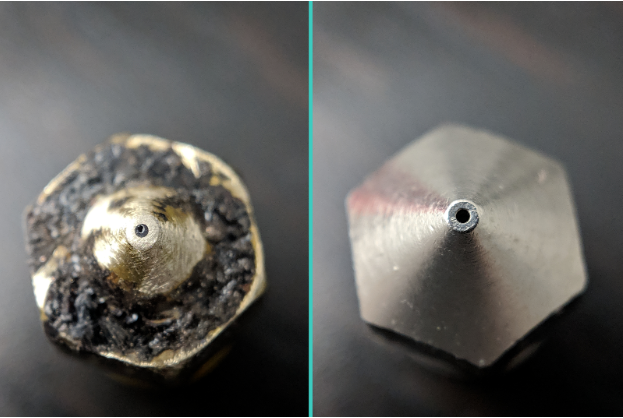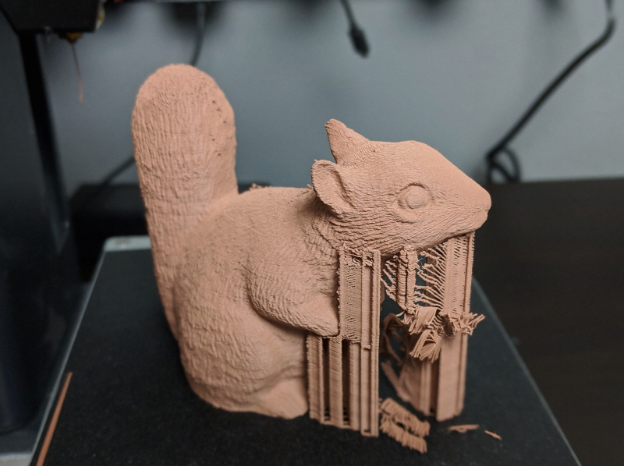Discover how mixing metal composites into plastic filaments makes 3D print parts look like metal.
With the exception of high-end industrial machines, all 3D printers build objects from plastic. 3D printers are capable of using quite a few different types of plastic, like ABS, PLA, and nylon; and they can use several different technologies to turn plastic feedstocks into parts. But the fact remains that plastics are the materials of choice for any desktop 3D printer. That said, parts that look and feel like metal can be created on hobby 3D printers by mixing other materials into plastic 3D printing filament.
Metal-composite filaments, sometimes called metal-filled filaments, contain roughly 40-60% fine metal powder mixed with PLA. This is not to be confused with filaments that are simply metallic in color. Metal-composite filaments are much heavier than normal PLA. While they look like metal, oxidize and weather like metal, and are cold to the touch, they can be printed on ordinary 3D printers.
These specialized filaments are available in several different materials: copper, bronze, stainless steel, and iron are the most common.
In terms of performance and cost, metal-composite 3D printing filaments do not exactly measure up against normal plastic filaments. Their main value is aesthetic.
In addition to looking like they are made from metal, parts printed with metal-composite filaments are much heavier than plastic parts. This is especially true for parts printed with high infill densities. Their weight makes the parts even more convincing as semi-replacements for cast metal objects.
On the left is a part printed in black PLA with 20% infill. On the right is the same model printed with ColoFabb Copperfill filament with 20% infill.
Cost
Unsurprisingly, specialized 3D printer filaments filled with metal powders are considerably more expensive than normal plastic filaments. There are also a limited number of manufacturers who produce metal-composite filaments.
ColorFabb and ProtoPasta are the two largest and most well-regarded distributors of these specialized feedstocks. The price for spools of metal-composite filaments depends on the type of metal and the quality of the filament.
Strength
There is a reason metal-filled plastics are not used in manufacturing. The composite material does not possess the strength, durability, and malleability of pure metal. Furthermore, the addition of metal powders into the PLA filament makes it more brittle than pure PLA.
Prints made with metal-composite filaments are very brittle.
Post-Processing
With other types of 3D printing feedstock, post-processing is an optional step for improving the aesthetics of your parts. With metal-composite filaments, post-processing parts is a necessity.
Straight off the printer, metal-filled parts will not look like metal at all. They have a matte finish and a color close to the color of the metal the parts contain.
This part was printed with copperFill but it does not look much like copper before post-processing.
Fortunately, post-processing metal-composite prints is easy but does require some equipment. Because metal-filled filaments use PLA as their base material, it can be difficult to sand the parts. The material heats up and softens quickly, creating an odd white residue. There are also no readily available chemicals that can be used to polish the parts the way ABS can be chemically polished.
The best way to post-process your metal-composite parts is to use a rock tumbler. These are simple devices consisting of a rotating drum filled with a polishing media. Simply place your 3D prints inside the drum and as the drum rotates, the polishing media exposes the metal inside the print.
There are a variety of different polishing materials available from hobby supplies vendors. One particularly popular media is using small machine screws that are a material similar to the metal-composite plastic. Another is small, rice-sized pieces of stainless steel.
A stainless steel polishing media for rotary tumblers.
After a long time in the rotary tumbler, the metal-composite prints will come out looking much more like real metal than metal-colored plastic.
Ease of Use
Since metal-composite filaments use PLA as their base material, the same settings used for printing with PLA can be applied to metal-composite filaments. This is great because PLA is the easiest type of material to use for 3D printing, which is why PLA is so popular. Metal-composite filament prints at a low temperature of about 200°C. It can also be printed without a heated build platform. In fact, metal-filled filaments are even less prone to warping than regular PLA.
These two prints, PLA on the left and copperFill on the right, were both printed with exactly the same print settings. In fact, both models use exactly the same g-code to print.
However, there are a couple caveats to using metal-filled filaments that makes it more difficult to use than regular PLA.
First, the metal powder in the filament makes this type of specialty feedstock more abrasive than pure plastic. Most 3D printers come with a brass nozzle. However, brass is a relatively soft metal and it can get worn away by the abrasive metal-composite filaments, slowly degrading your printer's performance.
On the left is a standard brass nozzle with many hours of printing under its belt, including around 3kg of metal-filled filament printing. On the right is a brand new, hardened nozzle. You can see that the nozzle on the left has started to erode fro the abrasive metal-composite filament.
Second, metal-filled filaments do not bridge nearly as well as pure plastics, nor do they tolerate overhangs as well as other materials. As mentioned above, metal-composite filaments are much heavier than normal plastics, making the material more difficult to hold bridged features aloft while the plastic solidifies.
The metal content of metal-composite filament also allows the material to hold heat longer than normal plastic. This is actually a good characteristic for the prevention of warping as it means parts cool more slowly and evenly. However, it also makes bridging and printing overhangs more difficult.
For better results, parts should be designed with minimal bridging or overhang—otherwise, you’ll need additional support material. If your part does have overhangs, be sure to enable support generation at a fairly high angle.
Printer Settings
Best Projects for Metal-Filled Filament Printing
Decorative Prints
Considering it is mostly useful for its aesthetic properties, metal-composite filaments are highly useful for decorative prints: desktop statues, figurines, paperweights, and wall art are some examples of common decorative prints made with composite plastics.
Jewelry
Jewelry can be printed with metal-filled filament, allowing designers to prototype designs or even print production pieces without having to deal with metal casting.
Visual Prototypes
Metal-composite filaments can also be used to create visual prototypes for metal parts. Parts printed with metal-filled plastic look like cast metal parts but they are orders of magnitude cheaper to make. Therefore, the material is useful for simulating the visual appearance for a part that will later be produced in metal.
Additional 3D Printing Resources
Looking for some tutorials about creating your 3D designs? Read up on how to use Tinkercad in this series:
If you haven't taken the plunge and purchased your own 3D printer, check out these articles that highlight some 3D printing services for your projects:
